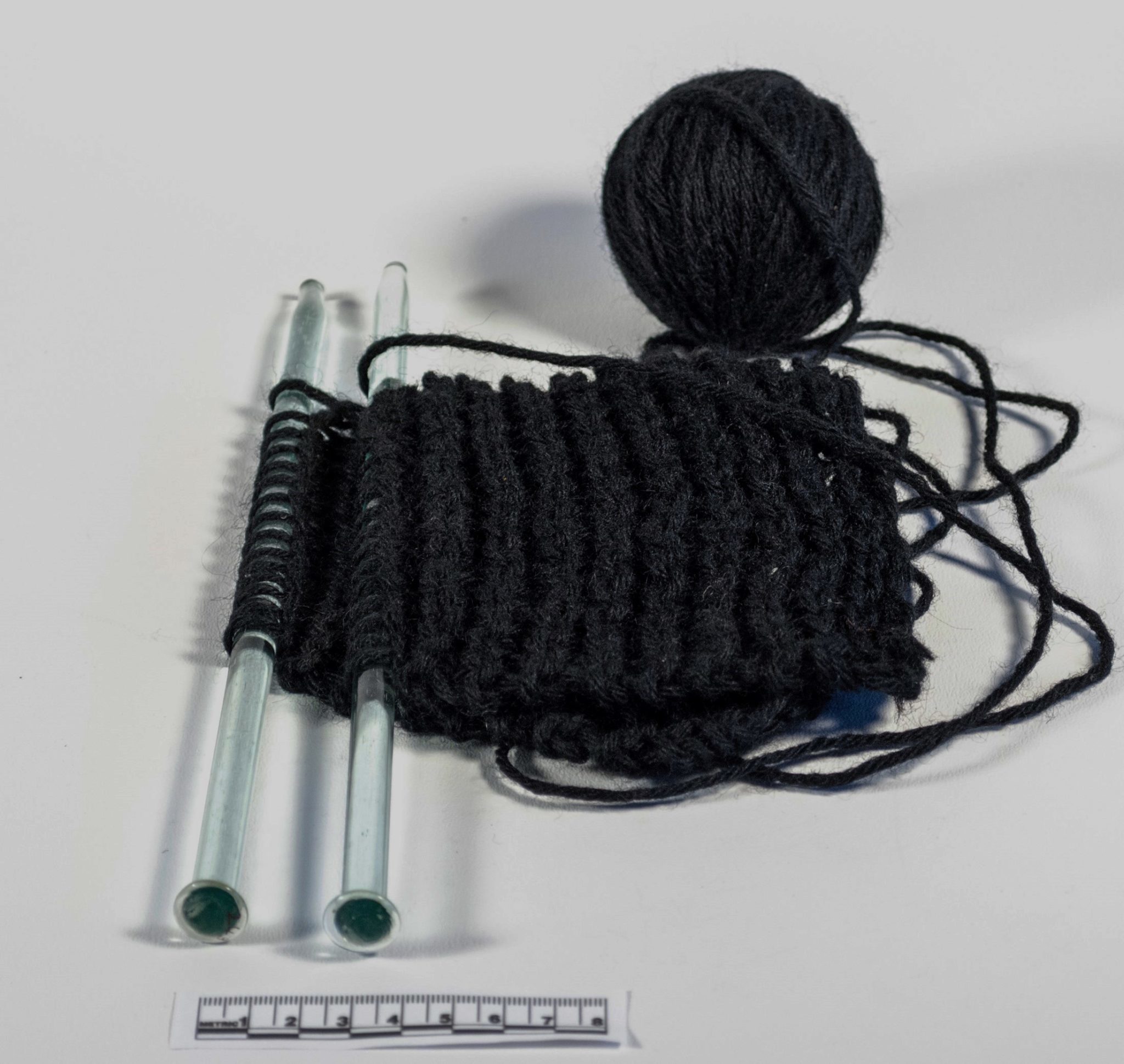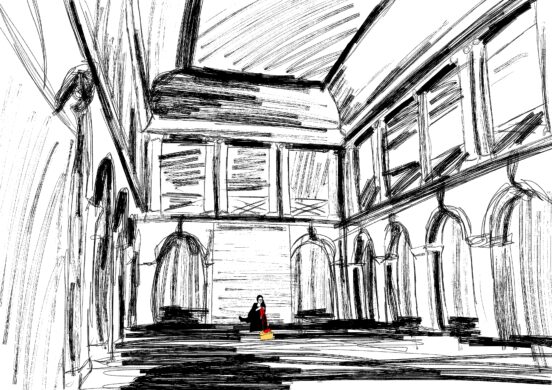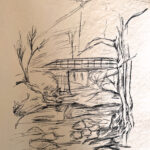
Knitting is a mindful practice. When you’re knitting, you cannot really focus on anything except what you are doing. Knitting has even been used quite effectively to help recovering drug addicts and alcoholics for this reason, and there’s even a “Knit to Quit” campaign for smokers – because you can’t smoke whilst you’re knitting. Knitting by nature requires you to be focussed on your pattern as your hands and mind are busy.
Knitting also has a rich folklore to it. In fishing villages in Aberdeenshire right the way up to the Moray Firth, it used to be said you could recognise where a fisherman was from from the knitting of his gansey (jumper). Whilst that might not be quite true – you absolutely can quite accurately narrow down where in Aberdeenshire or the Moray Firth the knitter learned their craft from traditional ganseys. They have been described as “the tartan of the sea”. Anchors and cables in the ganseys suggest the knitter learned their craft in Lossiemouth or Hopeman, hoof prints might mean the craft was learned in Avoch, whereas low heapies in the patterns mean Fraserburgh. The complex, tightly knit patterns also served to keep the fishermen warm, as the jumpers trapped air next to the body.
Knitting – and indeed, the act of working with wool at all – has a richly female dominated history. The term “spinster” actually came about in reference to the fact that many woman who spun wool for a living never married, because they never needed to, it was one of the few ways a woman could reliably earn enough money to support herself without a husband. There are tales of women meeting in the evenings to knit together in the fishing villages of Aberdeenshire and the Moray Firth, out of necessity, and of young women being sent off to help with the herring smoking returning with new patterns that their home village had not seen before. Knitting is handed down, from one woman to another, for generations. So, of course, it’s had a fair share of association with witchcraft.
In witchcraft practices, the act of repeating something over and over is common, to strengthen the spell. And knitting, by practice, is a repetitive task. In Celtic witchcraft tradition, a knitter would knit on blunt, glass needles, repeating the spell with every stitch. Once the spell was considered strong enough, the knitting would be taken off the needles and burnt to complete the ritual. The colour of the wool used was important – black for cursing or for revenge spells, red for love and fertility, etc. Of course, it is also similar to “knot work” practices in witchcraft – the act of tying knots into a rope and repeating spells as you do so, since knitting is essentially, tying knots over and over. Even the act of spinning raw wool into yarn has a strong image within folklore – she shall prick her finger on the spindle of a spinning wheel! – which likely came from this actual link with “wise women” and witchcraft, as well as the fact that many of the women who were burned as witches were actually just a bit too independent and outspoken, and therefore, a threat to patriarchal society, and of course, a woman who could support herself spinning wool was almost definitely falling into that category.
A Cycle of Wool will be a durational performance, lasting one lunar cycle, or 29 days. This is a significant cycle – the lunar cycle is approximately the same length of time as the menstrual cycle, and the moon has a long associated with female energy and witchcraft.
On the first day of the New Moon, I will begin to spin wool. I will spin the wool from moonrise to sunrise. The wool will be allowed to soak up moonlight for the duration of the time it is being spun. I will use drop spindle whilst spinning the wool, and I will not use any technology, listen to any music, or speak to anyone whilst I spin the wool. The wool will be spun outside in the moonlight if possible. The wool will be sourced from well-cared for sheep, in a farm in Huntly owned by a female shepherdess.
I will continue to spin wool until the Full Moon.
At 0300 on the night of the Full Moon, I will set up a small seat in the Sculpture Court of Edinburgh College of Art, where I will begin to knit. I will knit in the cable designs native to Aberdeenshire, using the wool I have spun, from moonrise to sunrise, for the rest of the lunar cycle. I will sing and work spells and blessings into the wool whilst I knit. People will be invited to leave things they wish to be knitted into the wool in a small book for me to reference before beginning to knit each night.
The wool will be displaced at this point, as I am – having travelled with me to Edinburgh from it’s home in Aberdeen.
On the next night of a New Moon, that is the complete end of the lunar cycle, the wool will be taken from the needles and burned on Aberdeen Beach. The ashes will be collected and displayed in a jar, alongside heather and sand from the beach.
For the duration of the performance, I will wear a simple black dress and no shoes.
A Cycle of Wool explores various themes;
Mindful practice, in the acts of working with your hands, focussing on the task and slowing down, being present and working on complex, handmade things whilst not allowing your mind to wander. During the COVID-19 pandemic, I think we have all spent too much time in front of screens – slowing the pace down and refusing technology therefore becomes a political statement.
It also explores belonging and identity, the concepts of home and heimat. I was born in Edinburgh, but I chose Aberdeen as my home. Drawing upon traditions rooted in folklore, and folk craft, and heritage of my chosen home in the North East of Scotland, I am taking wool from Aberdeenshire, knitting it in Edinburgh, and returning it to Aberdeen to be destroyed.
It is also questioning the archaic and patriarchal stereotypes of woman as “spinsters”, of knitting as a hobby for your granny, of strong, powerful young woman as “witches” to be feared.
There is also the element of ritual and dogma, religion. The choice to begin knitting under a Full Moon at 0300 draws upon old Christian superstitions of the “witching hour” being 0300, because that was the only hour that no canonical prayers were said, so the Devil could walk freely, and witches could hold their Black Mass. Even now, occult groups believe that performing rituals under a full moon, during the witching hour, has significance.









